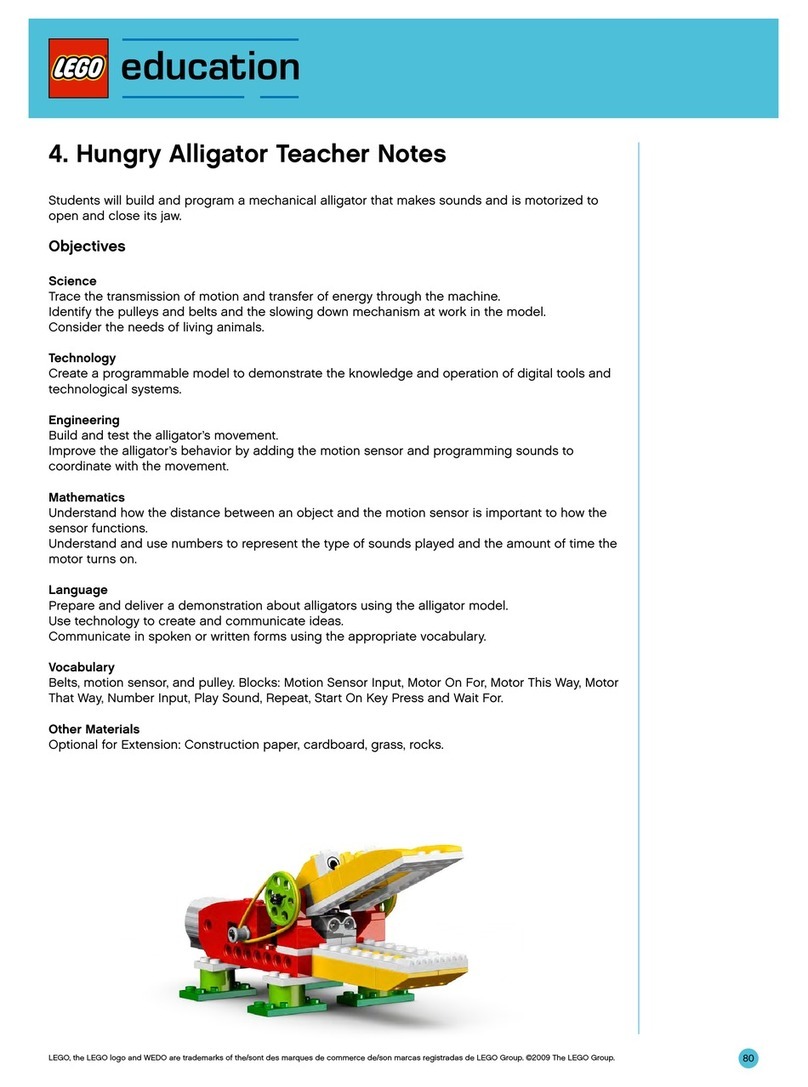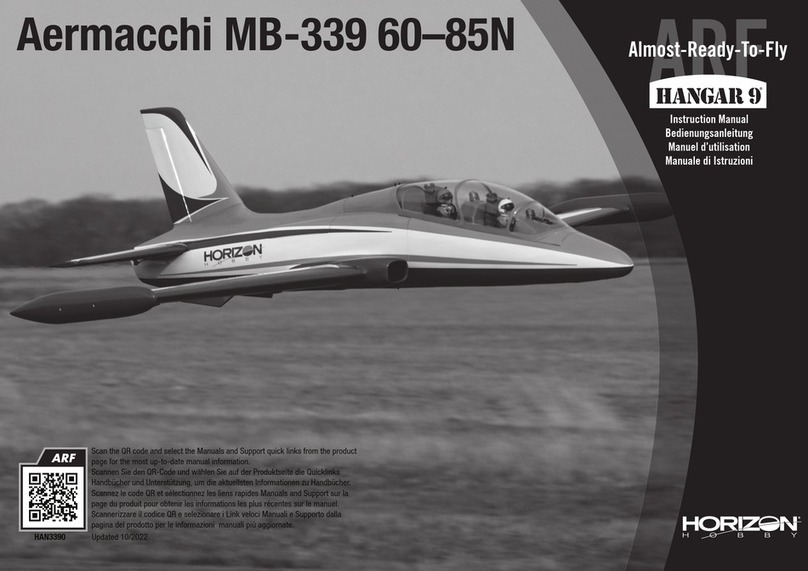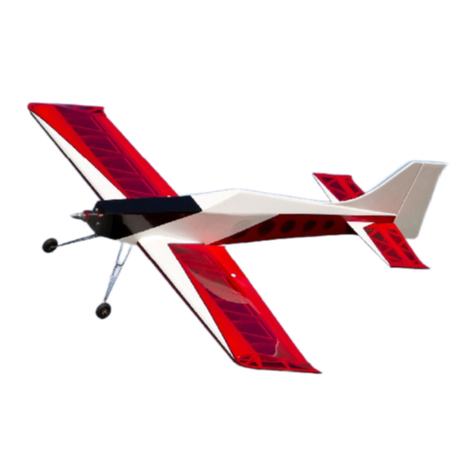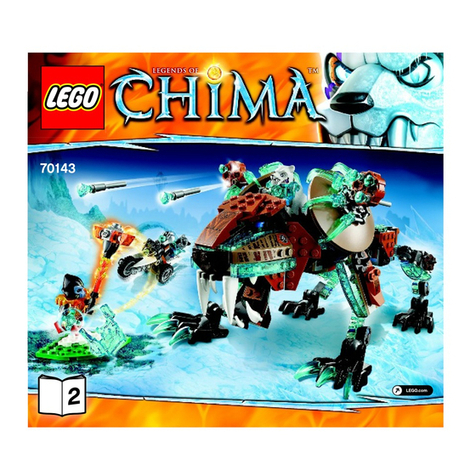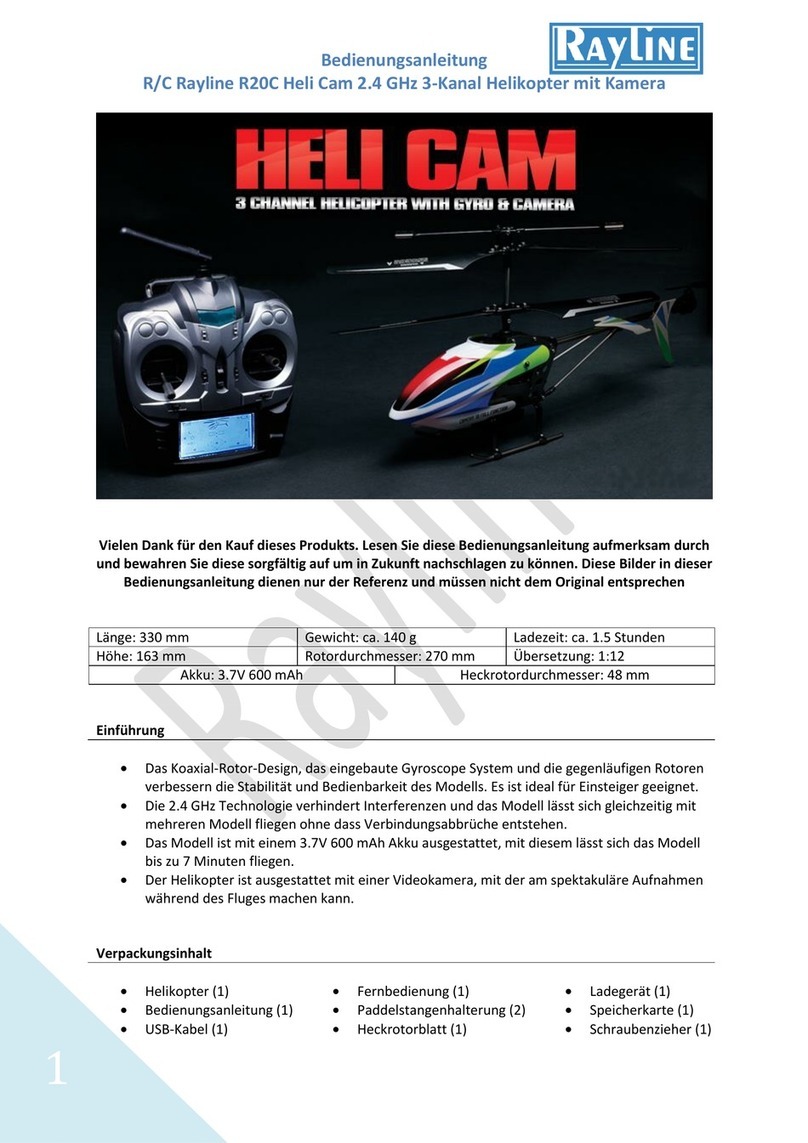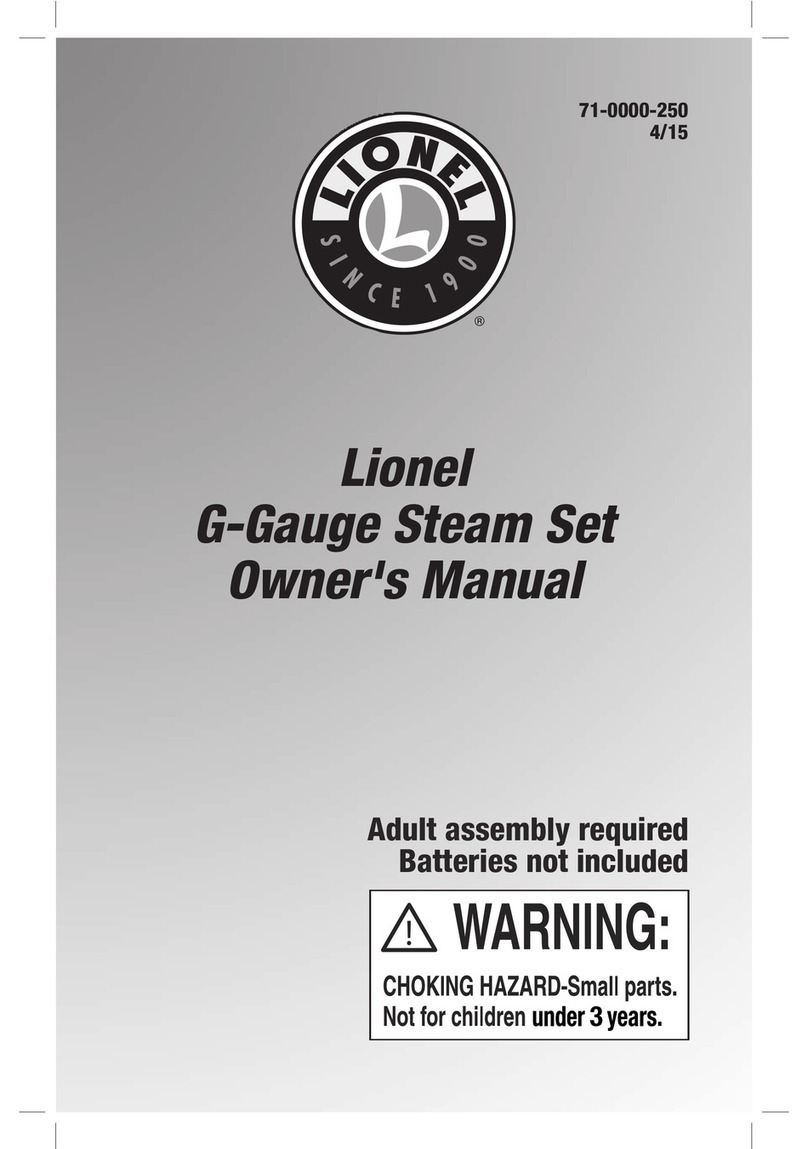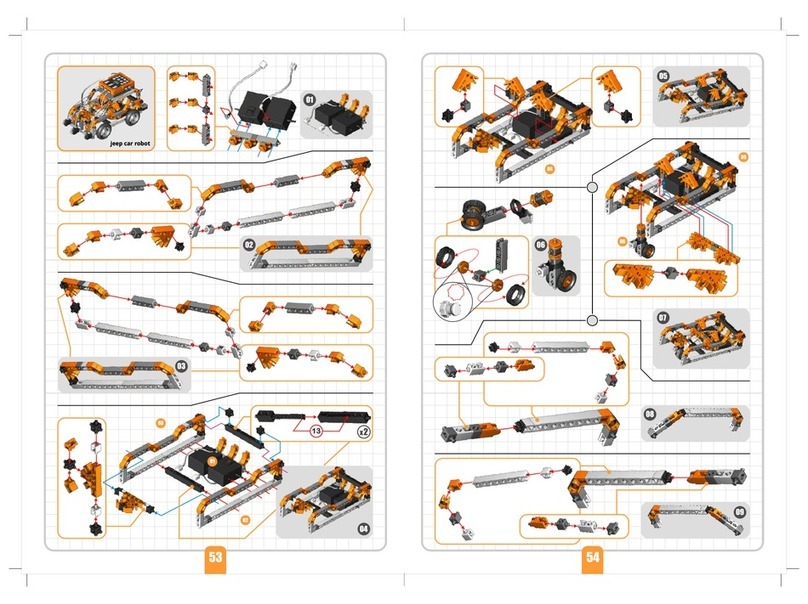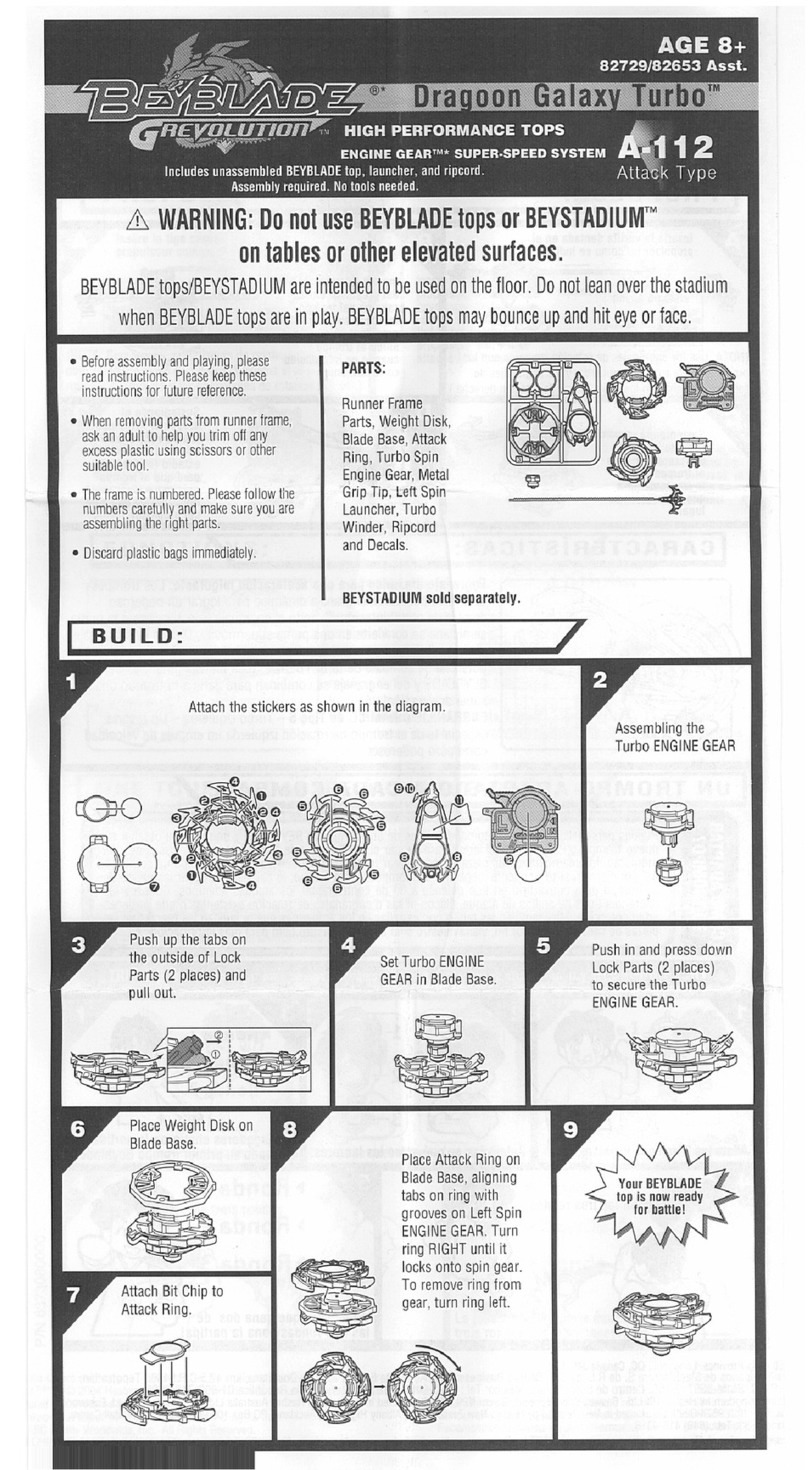Golden Eagle Talon F1-P Technical specifications

Assembly and Flight Manual
Almost Ready to Fly
Model Includes:
• Complete airframe in four color Ora-
cover (Ultracote) covering and trim.
• Aluminum wing tube, Painted alumi-
num landing gear, Tailwheel assembly.
• Control surfaces pre-drilled with
round point-type hinges provided.
• Profile wheel pants, Cowl Strakes and
basic assembly hardware.
• Color Assembly Manual on CD-ROM.
Before You
Begin:
Please read through this
entire manual carefully be-
fore starting your assembly.
I have attempted to illus-
trate the best methods and
materials necessary to com-
plete this airplane quickly
and for you to begin to
have successful, exciting
flights. This model has
been assembled and exten-
sively test flown as pre-
sented in this manual. If
closely followed, you should
have similar, predictable
results.
I hope you will enjoy the
building and flying of your
new Golden Eagle Aircraft
Talon F1-P as much as I
have.
Chris Tomberlin
Designed and sold by
Golden Eagle Aircraft
5921 Carmichael Rd.
Montgomery, Al. 36117
334-301-2830
© Copyright 2005-
2006
Talon F1-P
Aircraft Specifications:
IMAA Legal Giant Scale Profile
Wing Span: 80.5"
Overall Length: 78"
Wing Area: 1597 sq. in.
Dry Weight: 13.5 to 16 lbs.
(Saito 1.80 / DA50)
Wing Loading: 19.5 oz./sq.ft.
Engines: 1.80 Glow to
50cc Gas

Thank you for your purchase of the Golden
Eagle Aircraft Talon F1-P. This airplane represents
the product of hundreds of hours of design, flight
testing, and production effort that resulted in a
unique, high performance aerobatic R/C model
that has the flight characteristics of larger scale
airplanes at a much more reasonable cost.
The Talon is based on the full scale “Team
Rocket F1” aerobatic homebuilt aircraft.
Team
Rocket
provided their factory CAD drawings for my
reference in designing the Talon. You can see
more of this beautiful aerial hotrod at :
www.teamrocketaircraft.com
Being a profile design, the Talon F1-P may
be one of the fastest assembled giant scale ARF’s
available and this manual will illustrate the steps
necessary. While the assembly is relatively simple,
with all of the major construction completed by
the manufacturer, it is still very important that
your work be in a manner consistent with the de-
mands of giant scale R/C models. This manual is
also a guide to the set-up and flying of this excit-
ing radio controlled model airplane.
You will find that the Talon can be a very
easy to fly sport airplane or a wild, all-out, free-
style aerobatic animal. The choice is yours, even
during a single flight, with just a flip of the trans-
mitter switch from low rates to full blown 3D
throws. Even precision aerobatic practice is possi-
ble with this versatile design. Because of its high
performance nature, this airplane is not suitable
for beginning modelers or inexperienced R/C pi-
lots. If you are comfortable with flying smaller
mid to low wing aerobatic R/C models, though,
you should have little problem with the Talon.
Please follow the instructions carefully and
if you have a question, you can email me for assis-
tance at
chris@goldeneagleaircraft.com
or call
334-301-2830. Of course, your comments and
suggestions about the kit or this manual are al-
ways welcome.
Chris
Page 2
Talon F1-P
The minimum tools and supplies:
Exacto knife with # 11 blades
30 or 45 minute epoxy
Disposable epoxy brushes and cups
Thin CA glue
1/4” thick foam rubber
Double-sided tape or silicone adhesive
Iron-on covering or packing tape for gap seals
Electric or hand drill with various bits
Hex head (Allen) wrenches, Socket and hand
wrenches, Screwdrivers
Covering iron
12” ruler
Prop balancer
Sandpaper
Thread locking compound (blue)
Denatured alcohol
Fine line permanent marker
Other items that are nice to have:
Power rotary cutting tool (Dremel or other)
Trim covering iron, Razor saw, Incidence meter
Table of Contents Introduction
Assembly Manual
Assembly Tools & Supplies Needed:
Introduction..............................................2
Assembly Tools and Supplies Needed ..........2
Purchase Terms.........................................3
Kit Contents ..............................................4
Additional Equipment Required ...................5
Engine Selection .......................................5
Recommended Radio Equipment.................6
Preparation ............................................6,7
Wing Assembly.......................................7,8
Fuselage Assembly..................................8,9
Tail Assembly...................................9,10,11
Landing Gear...................................... 11,12
Engine Installation..........................12,13,14
Receiver Installation............................ 14,15
Preflight Setup.................................... 15,16
Flying Tips, Summary.......................... 16,17
Beam Mounted Engine Supplement...........18
Firewall Mtd. Engine Supplement......19,20,21
DA50 Installation Drawings......... 22,23,24,25
Brison 3.2 Installation Drawings..26,27,28,29

Page 3
Model aircraft are not toys and must be handled
with the utmost care. The use of these products
can result in serious injury or death. The buyer
assumes all liability associated with the use of
these products and is advised to return them to
the place of purchase in new and unused condi-
tion if unwilling to accept these terms.
That being said, we find aeromodeling to be
safe and infinitely enjoyable as long as proper safety
guidelines and common sense are followed. The AMA
(Academy of Model Aeronautics) provides just such
safety guidance, as well as sanctioned club flying fields,
events, and insurance to all its members. If you are
not already a member, please consider the AMA’s bene-
fits at www.modelaircraft.org.
I am also a member and supporter of the IMAA
(International Miniature Aircraft Association) which pro-
motes the non-competitive flying of giant scale models.
See the activities of their organization
at www.fly-imaa.org.
And, I am a member and competitor in IMAC
(International Miniature Aerobatic Club) which offers
scale aerobatic competitions to those pilots that are
willing to test their skills to the fullest. See their con-
test schedules and requirements at www.mini-iac.com.
All of these organizations can benefit any RC
modeler greatly and are highly recommended to all who
wish to advance their understanding and enjoyment of
this hobby.
Flight line At The Joe Nall IMAA Fly-In:
Purchase Terms
Assembly Manual Talon F1-P
Warranty
Golden Eagle Aircraft guarantees kits and merchandise
to be free from defects in material or workmanship at
the date of purchase. This does not cover damage ei-
ther in use or by modification. In no case shall Golden
Eagle Aircraft’s liability exceed the purchase cost of the
items. We reserve the right to modify or change this
warranty without notice.
Returns
The customer must make a written warranty claim to
Golden Eagle Aircraft before returning any item. No re-
turns will be accepted without prior authorization. We
reserve the right as to whether to replace, repair, or
refund for defective merchandise.
If returned for any reason other than an authorized
warranty claim, there will be a 10% restocking charge.
Other charges may apply if not received in new, unused
condition, or not in the original shipping containers.
Original shipping charges are not refundable. The pur-
chaser must obtain return authorization from Golden
Eagle Aircraft first and prepay return shipping charges
and insurance.
Damaged in Shipping
Refuse delivery of any obviously damaged packages. All
claims for discovered shipping damages must be made
with the carrier within three days of receipt. Please con-
tact us as well for assistance.
Errors and Omissions
Golden Eagle Aircraft makes every effort to pro-
vide accurate and complete pricing and infor-
mation about its products, including the assem-
bly and use thereof. We reserve the right to
make corrections to information and/or pricing
in our website or in any other product docu-
mentation or graphics as necessary. All repre-
sentations are provided without warranty of
any kind.
Liability
Final assembly methods and materials or equip-
ment used are the sole responsibility of the
purchaser. No liability is accepted by Golden
Eagle Aircraft for damage or injury resulting
from the assembly or use of any products pur-
chased by the buyer or any subsequent user.

Page 4
2- 1/4-20 x 3” nylon wing bolts, nylon insert
lock nuts, 4 nylon washers
2- 10-32 x 3” landing gear bolts, nylon insert
lock nuts, 4 washers
8- #2 x 1/2” screws
2- #4 x 1/2” screws
2- 4-40 x 1/2” cap screws, 2 washers
2- 4-40 T-nuts
Red Ultracote for engine bolt patches
CD-ROM Assembly and Flight Manual
Matching Ultracote Covering Colors:
Flame Red, Bright Yellow, Metallic Gold, Black
ARF Kit Contents:
Assembly Manual Talon F1-P
Fuselage
Battery and Receiver compartment hatches
Wing Panels
Ailerons
Fin and Rudder
Stabilizer and Elevators
Cowl Strakes
Aluminum Wing Tube
Painted Landing Gear Legs
Profile Wheel Pants
Tailwheel Assembly
Round nylon hinges, number as required

Page 5
Engine Selection:
Assembly Manual Talon F1-P
The Talon has been flight tested with three
types of beam mounted engines in sizes spanning the
recommended range: the Saito 1.80 four-stroke glow,
the Moki 2.10 two-stroke glow, and the Evolution 35GT
(35 cc) two-stroke gasoline with a tuned pipe system.
All were excellent performers but offer different power
levels and running characteristics.
We have also extensively test flown the Talon
with a Desert Aircraft DA50-R (50 cc) gas engine
and have found that the airframe handles the extra
power well within the limits of pilot skills and reason-
able throttle control. A supplemental section has been
added to this manual to describe how to mount the DA-
50 or a similar size firewall mounted gas engine. What
else can I say about the DA50 powered Talon? Outra-
geous! Insane! Fun!!
The Evolution 35GT gasoline engine is superb
motor for this airplane, especially using its optional
tuned pipe system. All flight maneuvers are easily per-
formed with “unlimited” vertical and hovers are at
about 1/2 throttle or less. The powerband is broad and
very controllable. With its ignition module and battery
it weighs more than any of the glow engines but re-
quires less fuel to be carried. The case and mounting
dimensions are similar to the Moki. Props I have tested
are 20x8 and 21x8 with either giving good perform-
ance. The smaller diameter prop will give more RPM
but the larger seems to have a bit more thrust.
The Saito 1.80 has that wonderful, deep four-
stroke sound and makes good use of its wide power
band and ability to swing larger props for its displace-
ment. I used props in the sizes 16x8, 17x6, and 18x6
with the 18x6 my favorite. For general sport flying and
even most 3D maneuvers, this engine was very enter-
taining. The only area that seemed lacking was vertical
pull-outs from hovers. Of course, the new Saito 2.20
would be a great choice if you’re a big four-stroke fan.
The Moki 2.10 is a glow powerhouse in a rela-
tively lightweight package. Vertical penetration and
pull-out from hovers was very good. Most flying could
be done at 1/2 or 3/4 throttle. I used a 20x8 prop
throughout its testing with good results.
The right choice of an engine in all my air-
planes has always been the most decisive factor in
whether I really had fun - and that’s what it’s all about!
* Included in the Optional
Premium Hardware Package:
Dubro fuel tank - 20 oz. for gasoline engines
(with gas stopper) or
24 oz. tank for glow engines (with glow
stopper)
2- Dubro Adjustable HD control horns
3- Dubro HD control horns
2- Dubro 3 1/4” treaded light wheels
2- Dubro 5/32”x 2” axles
4- Dubro 5/32” wheel collars
5- Dubro 4-40 safety lock kwik-links
3- 4-40 x 12" full thread rod
1- Kwik-link with rod - 2-56 x 12" (throttle)
1- 12” carbon fiber pushrod tube
4- nylon mounting straps with screws
Bright Yellow Ultracote for gap sealing control
surfaces
* Equipment Not Included:
3 1/2” Spinner (or 4” for 50 cc motors)
Radio equipment
Engine
Engine mounting bolts
Propeller
Nylon pushrod for gas engine throttle
Monofilament (fishing) line - 12”
Balance weights (if required)
Additional Equipment Required:

Radio System: A 6 channel computer ra-
dio is the minimum system that should be used
because of the huge control surfaces and large
control throws possible on this airplane. The pro-
gramming of both exponential and multiple rates
is required to fully appreciate the abilities of the
design and to provide adequate control throughout
the wide range of the flight envelope. A 4 channel
radio could work but you’ll have to work harder at
installation and flying to get reasonable results.
Six channel radio setup only is covered in this
manual.
Servos: Control surface servos (five re-
quired - two aileron, two elevator, one rudder)
must have a minimum of 100 oz.-in. of torque and
either coreless or digital types are recommended.
An even stronger rudder servo is advisable if
you’re a big fan of knife edge loops. A standard
servo is also required for the throttle.
You will need to use 1” to 1 1/4” aluminum
or heavy duty servo arms on all servos except the
throttle. I used Dubro “Super Strength” long com-
posite servo arms (available to match your servo
brand). Suggested computer radio setup and con-
trol surface throws are noted in the “Preflight
Setup and Checklist” section.
Servos extensions:
(Heavy Duty recommended)
3 - 36” long for rudder and elevators.
Note: some manufacturer’s servo leads are shorter
than others; i.e. a 40” extension for a Futaba rud-
der servo will reach the receiver a little easier.
1 - 12” long for flight battery (glow engine installa-
tion - forward battery location).
1 - 12” long for throttle (glow), 6” long for gas.
2 - 12” long for ailerons from servos.
2 - 6” long for ailerons from receiver.
Use 3/8” diameter heat shrink electrical tubing to
safety all concealed or permanent servo extension
connectors.
Page 6
Seal the Covering: OK, you’ve got all
your equipment selected, your assembly supplies
at hand, and you’re ready to go. As with every
iron-on film covered ARF, you should go over the
entire airframe with a covering iron to make sure
it’s fully shrunk and secure. Even if there are few
wrinkles, a little attention now will make a big dif-
ference after you’ve begun flying and exposed the
airplane to hot sun and fuel residue.
First, with the iron set at no more than
300°, seal all the edges and seams on all surfaces.
This must be done before any shrinking is at-
tempted to prevent the edges from coming loose
or creeping. Next, allow the iron to cool to no
more than 250°, and gently glide the iron over ALL
the covering to shrink and seal it to the wood be-
low. A covering heat gun may be used but be
careful to not overheat the film and to follow
closely behind with a soft cloth or glove to press
the adhesive onto the subsurface. Pay close at-
tention to the graphics as well and work from the
center out to any sharp ends or corners. If you
experience any smears of covering adhesive, de-
natured alcohol will remove it.
Fuel Proofing: Fuel-proof all exposed
wood surfaces with 30-45 minute epoxy thinned
about 50/50 with denatured alcohol and brushed
on. This includes the wing roots and the engine
mounting areas. You may wish to wait until the
engine fitting and drilling is complete since some
Preparation:Recommended Radio Equipment:
Assembly Manual Talon F1-P

engines will require trimming of the wood engine
beams. Pay special attention to the joints in the
engine mount area and fill any gaps with un-
thinned epoxy to prevent fuel intrusion.
Unless you have foam-safe CA, be very
careful of the use of CA glues where it might con-
tact or migrate into the foam cores of the fuselage
and wings. Regular CA glues will instantly dissolve
the foam and, if excessive, weaken the structure.
Wing Bolt Fit: Before installing aileron
hinges, you should check the alignment and fit of
the wing bolt holes in the wing root tabs to those
in the fuselage. Place the fuselage flat on the
work table and check the fit of the 1/4” nylon bolts
through the wing mount hard points’ holes. Be
very sure that you are checking the front wing bolt
hole and not the top landing gear mounting hole
since it is very close to the front wing mount.
Enlarge if necessary with a 1/4” drill bit but only
just enough to allow a snug fit. Insert the alumi-
num wing tube through the fuselage, slide both
wing panels on, and insert the rear 1/4” dia. nylon
wing bolt with a nylon washer through the rear
wing root tab. Measure the distance from the bot-
tom of the fuselage to the center of the wing
trailing edge of both wing panels. If this distance
is not the same, or if you have difficulty getting
the wing bolt through both wing panels’ tabs,
elongate one wing tab hole only to correct. Do
Page 7
not drill the hole larger, just elongate in the direc-
tion it needs to correct the fit.
When this is finished, install a 1/4” nylon
washer and locknut on the rear wing bolt to se-
cure both wing panels. Now, check the fit of the
front wing mount bolt with the front wing root
tabs, elongating the tab holes only as necessary to
provide a snug fit of the bolt. This process will
provide proper wing incidence and correct any
manufacturing misalignment. Use thin CA to seal
the interior of each wing tab and fuselage mount-
ing hole against fuel intrusion.
If you have an incidence meter you can
check the alignment of the wing panels with each
other and the engine thrust line. All reference
lines; vertical engine thrust, wing and stabilizer in-
cidence lines; are at zero degrees to each other.
Tip: The centerline of the wing tube opening and
the front wing bolt would be your datum line.
Aileron Servos: On the bottom of each
wing panel, locate the aileron servo openings and
check the fit of your servo. Trim the opening size
larger if necessary. Use your covering iron to seal
down any loose covering edges at the openings.
With the aileron servo in place, drill a 1/16” pilot
hole through each mounting grommet into the ply-
wood servo plate and install servo screws. Re-
move the screws and servo, and apply, sparingly,
a drop of thin CA to each servo plate hole to
harden the wood. Also fuel proof any exposed
wood with thinned epoxy. Install the 12” aileron
servo extensions, safety the connectors with heat
Assembly Manual Talon F1-P
Wing Assembly:

shrink tubing, pull the wires through the wings,
and reinstall the servos.
Aileron Hinging: Remove all aileron
hinges from both wing panels and ailerons and
clear each hinge hole of covering or wood shav-
ings. Do not enlarge - just clean them up a bit to
allow the hinge knuckle to seat properly.
Using 30 or 45 minute epoxy, install the
hinges in the wing panels and ailerons. Applying a
bit of Vasoline with a cotton swab to each hinge
knuckle will prevent the epoxy from intruding. Ap-
ply epoxy to both the shaft of the hinge and into
the hole before inserting. Clean away excess ep-
oxy with a paper towel and denatured alcohol.
Position the aileron from the wing’s trailing edge
with just enough gap to allow for about 50° of
pivot up and down. Insert several shims of card-
board or balsa along the length of the aileron to
maintain this gap and tape the aileron to the wing
to hold until the epoxy sets.
Control Horns: Thread the Adjustable 8-
32 control horn bolts (Dubro) through each pre-
drilled aileron hard point using the adjustable alu-
minum washers and pylon. If necessary, drill out
only enough to allow the horn bolts to thread
snuggly, not drop through. Measure the distance
horizontally from the bolt to the center of the
hinge line and redrill the nylon horn’s clevis pin
hole if required to align with the hinge centerline.
Trim and round off excess horn length. Thread
the control horn fully onto the control horn bolt’s
aluminum pylon.
Pushrods: Install the aileron servo horn
arm and be sure to use thread locker compound
on the screw if your servo has a metal shaft. In-
stall the Dubro safety lock link onto the control
arm and the clevis onto the control horn. With the
aileron aligned neutrally with the wing and the
servo arm 90° to the servo, measure the pushrod
length required from the safety link to the control
horn clevis, allowing for threading into each and
future adjustment. Cut the 4-40 full thread push-
rod to this length, thread into clevis and safety
link, and adjust for neutral aileron at the 90° servo
arm position. Measure the resulting exposed
threaded pushrod length and cut the carbon fiber
Page 8
pushrod tube 1/2” shorter (allowing 1/4” exposed
threads from each end of the CF tube). Remove
the safety link from one end of the pushrod,
thread a 4-40 nut down to the clevis, slide on the
CF rod, and thread on another 4-40 nut. Reinstall
the safety link and readjust aileron to neutral. Ad-
just to center and tighten the 4-40 nuts snuggly to
each end of the CF tube. This pushrod assembly
is extremely rigid and has been used successfully
on much larger aircraft. Gap seal the hinge lines
with iron-on covering or clear packing tape.
There really is no fuselage assembly but
rather preparation to receive the engine, tail sur-
faces, landing gear, and radio equipment. No can-
opy or engine cowl to fuss over! See the gas en-
gine installation for its’ throttle servo location.
Engine Mounting: (see Engine Mount-
ing Supplements) Test fit the engine to the
wood mounting beams, allowing 1/8” clearance
from the end of the nose to the back of the spin-
ner plate. Adjustments to fit various engines are
necessary but simple. If the engine case is too
wide to fit between the mounting beams, remove
just enough material equally from each beam to fit
snuggly. Since most engine cases are rounded,
usually just a bit of a bevel at the outer edges of
the mount are required. On the other hand, if
your engine case is more narrow, epoxy a thin
plywood shim to each mount to keep the engine’s
vertical thrust line correct and to reinforce the
Fuselage Assembly:
Assembly Manual Talon F1-P

mounting bolt holes. When satisfied with the fit,
mark the center of each mounting hole and drill all
the way through the fuselage. The use of a drill
press or drill jig to keep the holes perpendicular is
best.
From the opposite fuselage side, cut or drill 1/2”
holes only down to, but not into, the engine
beams. These holes are to allow clearance for the
engine bolt locknuts and will be concealed with
iron-on covering.
Cowl Strakes: In the above photo, you
can also see the cowl strake slots in the fuselage.
Remove the covering from the three cowl strake
openings in each side of the fuselage for attach-
ment of the cowl strakes. Use a heated wire to
remove the foam to the depth of the tabs at the
slots. Epoxy the cowl strakes to each side of the
Page 9
fuselage, making sure that they are perpendicular
to the sides. Again, coat all exposed wood with
thinned epoxy to seal against fuel. Apply thin CA
to the engine mount holes sparingly to avoid the
foam on the opposite side. If you wish, you can
paint the wood surfaces inside the engine bay with
matching “Flame Red” Ultracote paint. Wait until
you have the tail surfaces and landing gear
mounted before installing the engine.
Fin and Stabilizer: Slide the fin in place
in the fuselage slot and mark a line at the fuse
side. Remove any fin covering that is more than
about 1/8” below this line without scoring the
balsa sheeting on the fin. Also mark and cut the
rudder servo opening in the fin sheeting. Some
servos’ depth will require you to remove the right
side fin sheeting as well (not the fuse side) to fully
seat the servo against the mount. You could also
use a thin shim at the outside of the mount plate.
The rudder servo should mount so that the shaft
and wire are to the front. Remove any interior fin
balsa as required to clear the servo wire path.
Now measure the trailing edge of the stabi-
lizer and mark the centerline with a felt tip pen.
Measure outward each side of the centerline one-
half of the width of the fuselage and mark a line
for mounting alignment Use a drafting triangle or
carpenter’s square to assure that your lines are
90° to the trailing edge of the stab. Center the
Assembly Manual Talon F1-P
Tail Assembly:

stab in the fuselage slot and trace around the ele-
vator servo plate at the underside of the stab. Re-
move covering from the stab bottom to 1/16” in-
side these lines, being careful not to score the
balsa sheeting. Also remove the covering from the
top of each elevator servo box.
With the wing tube and wings installed,
and the stabilizer and fin temporarily in place,
check that the stabilizer is level with the wings. If
necessary, sand the stabilizer opening or use thin
balsa shims to bring the stab into alignment with
the wing. Using 30 or 45 minute epoxy, glue the
stabilizer in place first and then the fin. Use the
drafting square again to keep the stabilizer trailing
edge 90° to the fuselage. Be sure to keep the
openings for the rudder and elevator servo wiring
clear of epoxy. Clamp the fuselage sides to fin as
Page 10
shown while the epoxy cures.
As you did with the ailerons, clear the
hinge holes and epoxy the hinges for the fin and
elevators in place. The bottom rudder hinge will
need the hole in the fuselage deepened to fit. Al-
low just enough gap for about 50° of control sur-
face travel. Install the control horn bolts in the
rudder and elevators as you did the ailerons. Gap
seal the hinge lines.
Tailwheel: Assemble and install the tail-
wheel and bracket with two #4 screws as shown
in the following photo. I used a modified servo
arm to act as steering arms and secured it to the
bottom of the rudder with two #4 screws. Back
out all the mounting screws, harden the holes with
thin CA, allow to cure, then reinstall. I like to use
monofilament (fishing) line to connect the rudder
steering arm to the tailwheel arm. It helps to tape
the rudder in the neutral position first, then pull
each side tight and tie each side equally.
Rudder and Elevator Servos: Drill and
screw the servos temporarily in place then remove
the servos and CA the screw holes. Attach the
servo extensions and safety the connections.
Thread each of the elevator servo wires
through separately and, using the pull cords, gen-
tly pull the wires through to the receiver opening.
I made a big loop with the pull cord so that each
wire pull would still have the cord in place for the
next wire. I also like to fold the wire back a cou-
ple of inches and hold it with a very little bit of
Assembly Manual Talon F1-P

tape to prevent pulling directly on the connector.
Wrapping the tape over the corners of the connec-
tor helps keep it from hanging up too. Now, pull
the rudder servo’s wire through also. A bit of back
and forth pulling may need to be done to get the
Page 11
last wire to pass over the others, but be patient
and it will happen. Labeling each servo wire after
it’s pulled into the receiver opening is a good idea.
With the tail servos in place, fit and install the con-
trol horns, servo arms, and pushrods as you did
with the ailerons. Again, place the pivot of the
clevis over the center of the hinge line. Adjust to
neutral all pushrods.
Landing Gear: Bolt the landing gear legs
to the fuselage with two #10 x 3” machine screws
by adding a #10 washer and inserting from the
tank side. Place another washer and a #10 lock-
nut on the engine side and tighten. Although
there are hard points in the fuselage at the bolts,
do not over tighten to the point of crushing the fu-
selage sides. Bolt both 5/32” x 2” axles to the
landing gear legs. Enlarge the profile wheel pants’
mounting holes if necessary and slide over the
axle flush to the gear leg. Temporarily slide on
the wheels and set the airplane on its gear. Posi-
tion the wheel pants to align with the fuselage and
mark the holes for the attachment screws. Drill
the wheel pants to accept the 4-40 t-nuts, set the
nuts in place on the wheel side of the pant and
add a drop of CA to hold. Apply thread locking
compound to the screws and attach each wheel
pant with one 4-40 machine screw with a washer.
Remove the wheels and slide in place the
two inner 5/32” wheel collars and space to allow
for free rotation of the wheel. Thread-lock the set
screw. Put the wheels back in place and mark a
Assembly Manual Talon F1-P
Landing Gear:

spot at about the center of the outer wheel collar
position and file a flat spot for the set screw to
hold. Install the outer wheel collar and again use
thread-locker.
Engine Mounting: Engine mounting
bolts should be high strength socket head bolts as
large as can be inserted through the engine
flanges. A 1/32” plywood shim under the front
engine mount holes will achieve about 2 to 3
degrees of right thrust. The engine bolts should
be long enough to pass through the engine
flanges and wood mounts with length enough for
the lock nuts to fully engage. Even with locknuts,
use thread locking compound since these will be
concealed. Use the included matching iron-on
covering to cover the holes in the left fuse side.
Fuel Tank: Assemble the tank stopper,
cap, vent and fuel lines to your preferred method.
Be sure to use a glow (black) or gasoline (red)
compatible stopper according to your engine type.
I used a fuel line “T” and a plug as a filler line,
pinching the engine side of the line while filling.
Apply a layer of foam sheet to the back of the fuel
tank using double sided tape or silicone adhesive.
I like to use foam pipe insulation since it resists all
fuels and will not soak up spillage.
Locate and mark the positions of the four
Page 12
nylon straps that will hold the tank in place. They
should be placed about 1 1/2” inside the tank’s
length from the rear and the stopper’ and, 1/4” in-
side the top and bottom edges. Be sure to fit the
wing panel on before installing to allow clearance
between the tank and the leading edge. The tank
is mounted sideways on the fuselage with the top-
most side touching the underside of the cowl
strake. Drill the mounting holes, thread in the
strap screws, remove, and sparingly CA the holes.
Loosely install the four straps, slide two 12” - 14”
nylon zip-ties in place and tighten the screws
down.
Place the battery compartment hatch cover
over the opening, locate and drill the hatch tabs
for four #2 x 1/2” screws. Temporarily screw in
place, remove and CA the holes. Cut an elongated
hole forward of the tank position for the fuel and
vent lines to pass through to the engine. There
should be room behind the engine and between
the engine mounts to clear these lines.
Set the tank in place and tighten the zip-
ties. Attach and route the fuel and vent lines to
the engine. I always use a small zip tie at each
fuel and vent line connection, including inside the
tank and at the engine, except for the filler plug.
Throttle Servo for Glow Engines:
Attach the servo extension, safety the connector
with heat shrink tubing, and thread the wire
through the servo opening down into the battery
compartment below. From there, pull the throttle
servo wire back into the receiver compartment.
Assembly Manual Talon F1-P
Engine Installation: See Beam and
Firewall Mounted Engine Supplement
Sections (p.18 - 21) first.

Page 13
ing to the switch and battery fed down into the
battery compartment below. Cover the old open-
ing with a piece of matching iron-on film to seal
from fuel before securing the module. I wrapped
the module in an old foam rubber can “cozy” cut
to size and secured it with zip ties that were fas-
tened to the fuselage side with #4 screws.
You will need to tunnel a new route for the
throttle servo wiring to the receiver compartment.
It is easiest with a heated piece of pushrod wire
that is pushed gently through the fuselage foam
core just over the wing tube. Just make the tun-
nel large enough for the wiring connector to pass.
Install and safety the servo extension, thread it
through to the receiver opening, and install the
servo. Use a flexible plastic pushrod to the en-
gine’s carburetor arm, and do not allow any metal
to metal connections to avoid radio interference.
I installed the ignition switch directly above
and on the opposite side of the fuselage from the
module (above the strake). Again, a short tunnel
can be made down into the battery compartment
for connection to the ignition battery. Secure all
connections and wrap the battery in foam before
screwing the compartment cover plate in place.
Evolution 35GT Gas Installation Pictured:
If you plan to install the tuned pipe ex-
haust system as I did on the Evo 35GT, or a simi-
lar engine, you’ll need to support the rear of the
pipe. I fabricated a 1/8” plywood hanger bracket
that is hung from the rear wing mount bolt and
Assembly Manual Talon F1-P
Attach the 2-56 metal pushrod with the clevis to
the engine’s carburetor arm. Measure, cut, and
install the pushrod to the throttle servo arm with a
“Z” bend at the arm.
Saito 1.80 Glow Installation Pictured:
Moki 2.10 Glow Installation Pictured:
Throttle Servo and Ignition Module
for Gas Engines: This gets a bit more involved
since we need to allow space for the ignition mod-
ule directly behind the engine and move the servo
as far back as possible. Measure your throttle
servo and cut a new opening centered on and
back 9 1/2” from the rear of the engine bay open-
ing. Make sure you do not let the location inter-
fere with the wing. The ignition module will be
placed over the original servo opening and its wir-

with silicone tubing spacers, zip-tied the pipe to
the bracket. Paint the bracket or cover with iron-
on film for protection.
The following drawing is of the bracket I
used with the Evo 35GT pipe that places the pipe
parallel to the fuselage.
As shown in the following photo, you will
also need to notch the right aileron to clear the
tuned pipe when the aileron is fully deflected.
Neatly cut away the inside corner just enough to
clear the fully deflected aileron. Then glue thin
balsa or plywood to cover the exposed foam core
and cover the exposed wood with matching iron-
on film.
Install the propeller and spinner. Depend-
ing on the weight of your engine, may want to de-
cide on a lightweight carbon fiber type or an alu-
Page 14
minum one. I used a heavier aluminum spinner
with my lightest glow engine and a carbon fiber
one with the gas engine and larger glow engine.
If you have a glow engine installed you
are ready to install the receiver and flight battery.
Connect and secure the battery extension wire and
pull back to the receiver compartment. Cut an
opening for your switch (I recommend a heavy
duty charge switch) directly above the receiver,
making sure that you will clear the wing before
cutting. Connect and safety the wire from the
flight battery to the switch and plug the switch
lead into the receiver.
If you have a gas engine, you have al-
ready used the forward battery compartment for
the ignition battery and will need to find another
place for the flight battery. The best place for
helping balance the heavier gas engine will be di-
rectly behind the receiver. Do not cut the re-
ceiver opening larger unless absolutely nec-
essary. I used a heated piece of pushrod wire
(bent to a ‘u’ shape and inserted into a soldering
gun) to remove just enough from the center of
the fuselage core to slide the battery in behind the
receiver. I used a two cell Li-Ion pack that fit
nicely and I also made a recess above the receiver
for a voltage regulator. If you must cut the open-
ing larger, stay within the outline of the wing root,
save the cutout, and tape the piece back in place
Assembly Manual Talon F1-P
Receiver Installation:

when finished. The wing will hold it in place when
attached.
Install the switch, connect and safety the
wire from the flight battery to the switch, and plug
the switch lead into the receiver. You may now
also connect all your servo wiring to the receiver.
Be sure to lead a couple of 6” aileron extensions
out each side of the fuselage.
Using a piece of pushrod wire again or a
small nylon tube, push down vertically from the
tapered canopy edge into the receiver opening for
the antenna. Pull the antenna through and route
outside the fuselage back towards the tail and se-
cure in your favorite manner. Wrap the receiver in
foam and insert. Cut an opening in the receiver
hatch cover and pull the left aileron lead through.
Secure the receiver cover with four #2 screws.
Center of Gravity: Check the airplane for
center of gravity balance (CG) at the center of the
wing tube. A little nose heavy, CG within 1/2” for-
ward of the tube center, is a good place to start if
you’ve not flown an aircraft with this level of re-
sponsiveness. Tail heavy, at or more than 1” be-
hind the tube center, will be exciting since this air-
plane is already very pitch sensitive. Use addi-
tional weight only if necessary to adjust the CG
out of extreme nose or tail-heaviness. The Talon
has been tested to both extremes and flies well
within a broad range of CG because of its wing de-
sign. A rearward CG will help 3D maneuvers like
Page 15
waterfalls and harriers but will tend to tuck the tail
on landing with a near empty tank. I use a mix of
down elevator to throttle at idle to keep the nose
level in this case.
You’re ready to set up your transmitter and
start exercising those monster control
surfaces!
First, test and adjust your servos’ center
and travel direction on your transmitter. If you
have a computer radio, then you will have no
problem setting this airplane up to handle just
about anything you want to try. This model is in-
tended to provide very quick responses to control
inputs and it will be difficult to master all it’s capa-
bilities with a simple four channel radio. At least
dual rates are a must and proper use of exponen-
tial is very desirable. The elevators and rudder are
very sensitive and the ailerons provide wild roll
rates on the 3D setting but the airplane is very se-
date and capable of precision aerobatics on low
rates.
I will outline the set-up, utilizing triple
rates, from my own Futaba computer transmitter,
so you may have to make adjustments to suit
something different. I will also note the control
throws I am presently using. These rates and
throws represent that which was obtained with the
control horns and servo arms that I noted previ-
ously. I may have adjusted the pushrod link to a
closer hole on the servo arm to achieve the indi-
cated travel. Travel is measured up and down
from neutral at the widest point of the trailing
Preflight Setup
Assembly Manual Talon F1-P

edge of the control surface.
After getting familiar with the airplane, I
now just takeoff and fly full time on 3D rates. The
Talon is so stable in straight line flight that slam-
ming right into 3D after four point rolls is easy.
Triple Rates, Exponential, Surface Travel:
Aileron: Low Rate: 70% (1 1/2”)
Expo: -20%
Med. Rate: 85% (2”)
Expo: -35%
High (3D) Rate: 130% (2 1/2”)
Expo: -60%
Elevator: Low Rate: 35% (1”)
Expo: -30%
Med. Rate: 50% (1 5/8”)
Expo: -60%
High (3D) Rate: 140% (3 1/2”)
Expo: -80%
Rudder: Low Rate: 60% (3”)
Expo: -20%
Med. Rate: 85% (4 1/4”)
Expo: -50%
High (3D) Rate: 140% (6”)
Expo: -60%
Endpoint: 100% on all except throttle.
Mixes:
Elev. To Flap: (spoilers - both ailerons up) 5
point mix with 1 & 5: 80%/-60%, and 2,3,4: 0%
Throttle to Elev.: -4% with 25% offset.
Airbrake: 25% (for landing)
On the test ships, no mixes were required
on rudder to elevator or aileron for knife edge.
Your airplane may need some depended on CG
and other factors.
Remember that exponential on Futaba is
negative for less sensitivity around center and that
JR is positive.
Throttle: Run up the engine and adjust the
throttle servo up for full open and idle settings.
Always have the throttle travel set so that you can
kill the engine at any time with throttle off, throttle
trim full down, or using the throttle cut function on
your transmitter.
Page 16
First Flights:
Taxiing is very positive with the big rudder
so point it down the runway and juice it! Let it roll
and lift off with gentle up elevator. Most takeoff
rolls are 20 feet or less!
Of course, first zoom around on low rates,
trim and feel it out for a couple of flights. Switch
to high rates only when comfortable and try some
aerobatics. The great thing about the Talon is
that I’ve found no tendencies to tip stall at any
speed. If you’ve gone all out on engine displace-
ment, just remember to exercise good throttle
control. Every airplane has its limits on speed
and G-loads and modern R/C designs with huge
control surfaces will self destruct if you’re ham-
thumbed enough. Use full throttle only for vertical
and full 3D control travel only at low speeds.
Landings are very mild and slow with the
huge wing area. If your CG is at or behind the
wing tube, you’ll probably notice a little tail-
heaviness when the fuel gets low. With your com-
puter radio you can mix down elevator to your low
throttle to automatically trim for landing.
Now Try This!
While this airplane is capable of all the ex-
treme 3D maneuvers, you can also do most all tra-
ditional precision aerobatics and it is very comfort-
able for sport flying.
Knife edge flight is so easy and with little
or no pitch coupling. An IMAC buddy of mine calls
it the “Surfboard” because of its effortless knife
edge. Just throttle up, roll onto one side and give
a little top rudder to hold it in level flight. Now try
a horizontal knife edge figure eight. You can?
OK, now do it vertically! How about knife edge to
knife edge snaps - Hoo-Wee!
The Avalanche is a cool name for a sim-
ple maneuver. This is a loop with a snap roll on
top. To make it more interesting, try a snap to
the right and then to the left - the engine torque
will help it through the second snap. If you’re
good, you can come out the bottom of the loop in
the same direction you started.
Blenders will make your eyeballs sweat.
With high rates, take it high and pull over the top
and straight down at low throttle. Immediately
Flying Tips
Flight Manual Talon F1-P

give full left aileron for a lightning fast roll. Then,
snap the left stick into the bottom right corner and
the right stick into the top left corner. Ease the
aileron back towards the center to slow down the
spin and add throttle to transition into an inverted
flat spin. Get way too much throttle on the
downline and you’ll see how this maneuver got its
name: you’ll hear a snapping sound and see
brightly colored pieces of airplane falling to the
ground. With a little practice you can stop the
vertical drop entirely and rotate inverted while
maintaining altitude.
Elevators are just what they sound like -
you come straight down in a level attitude. On
your computer radio, program in spoilers (both ai-
lerons up) mixed with maximum up elevators.
The trick is to get as little forward motion as possi-
ble while the airplane floats down wings and fuse-
lage level. Just set your switches for 3D throws
and the elevator to flap mix shown (spoilers), go
twice as high as you think you should, level off,
throttle back, allow the airplane to slow almost to
a stall, and pull full up. Add very little throttle to
hold the nose up. Because of its unique aerody-
namics, the Talon is the most stable airplane in
elevators most people have ever seen. The de-
scent is so slow that with a little breeze it will eas-
ily float backwards. Just use a little rudder to
steer the nose around or let the engine torque it in
a lazy spiral. Add throttle first, then neutralize the
elevator stick to fly out.
Harriers are a natural transition from the
Elevator. Once you have your Elevator stable, add
a little more throttle until the descent is stopped
and you are traveling forward very slowly. You’ll
need to get the nose relatively high and use some
“spoiler” on the ailerons to kill the lift since the
Talon has such a low wing loading.
Hovering is also easy to learn with the
Talon because its long fuselage allows you more
finesse at the rudder and elevator. Slowly fly up
to the point of an abrupt pull-up (called a “Wall”),
using the “spoiler” feature. Chop the throttle just
as you pull up to kill the upward momentum then
immediately ease the throttle up to hold it steady.
With the larger engines, the Talon will hover at
one-half throttle or less. Good hovers take prac-
tice, practice, practice!
Page 17
Again, thank you for purchasing the Talon
F1-P from Golden Eagle Aircraft. My intent has
been to bring you a unique aircraft design that is
simple, durable, and has very high aerobatic per-
formance. I’d like very much to hear back from
you about your experiences with my airplanes
since all information helps me produce better de-
signs. Hope you enjoy flying the Talon as much
as I have and I look forward to meeting you at a
fly-in sometime.
Chris Tomberlin
Golden Eagle Aircraft
Summary
Flight Manual Talon F1-P

For those of you that plan to use beam
mounted engines on the Talon, and especially the
larger beam mounted gas engines like the Evolu-
tion 35GT, I want to show you a quick reinforce-
ment that I recommend. This modification will
help prevent twisting and loosening of the wood
engine beams in the fuselage. My own Talons had
flown several months with both the Moki 2.10 and
the Evo 35 engines and showed no evidence of
this problem. However, since I want you to ex-
perience as few problems as possible and this is a
real easy fix before fitting the engine, I've included
a drawing of the reinforcement that I recommend
for these engines.
Page 18
Just drill four 3/16" holes in the locations
shown in the drawing, cut four 3/16" hardwood
dowels to match the width of the fuselage, and
epoxy them in place. Cover the resulting holes
with small pieces of the red covering film that I in-
cluded to cover the engine mount bolt holes -
there should be enough to do all the holes if you
are careful. These "engine pins" will transfer some
of the twisting force out to the fuselage sides and
help prevent any loosening of the beams inside.
Let me know if you have any questions about this
modification.
Chris
Recommended Beam Reinforcement
Beam Mounted Engine Supplement Talon F1-P

Alright all you power junkies out there,
here it is! This is the method necessary to mount
your DA50 (or similarly configured gas engine) to
the Talon. The mounting process is relatively sim-
ple and takes little extra time to accomplish. This
has been tested on my own aircraft and has
proven to be very worthy of the additional effort
and cost. You may have noticed I’m calling this
modification the “Talon XP” (for Excessive Power).
Fuselage Cutting: Refer to the drawing
“Fuselage Mods - DA50 Step One” and using
the dimensions shown, mark the cut lines on each
side of the fuselage. If you planning to use an-
other firewall mounted engine that either doesn’t
have the rear mounted carb or is another brand,
adjust your cut lines accordingly.
Page 19
BE SURE that you mark each side exactly
the same - measure twice - cut once! Using an
Exacto knife and a straightedge, cut the lines
through the covering and into the lite-ply sides
and balsa bottom. Pull the covering film back
away from the cut edges about an inch or more -
you’ll seal that back down later. With a razor saw,
now cut completely through the fuselage nose and
the lower engine mount beam. The upper hori-
zontal cut line follows the underside of the upper
wood beam - do not cut through the upper beam.
Now mark and cut a 1/2” by 3 5/8” section
from the removed lower nose as an infill piece for
the upper beam mount notch. Fit and epoxy this
filler piece into the upper notch.
Firewall Mounted Engine Supplement Talon XP
DA 50 Installation Illustrated:

Fuselage Reinforcement: Refer to
drawing “Fuselage Mods - DA50 Step Two”.
The new engine mounts must bolt through the fu-
selage at the original engine beams. To prevent
the fuselage sides from being crushed, 5/8” dia.
hardwood dowels must be installed at the bolt lo-
cations. Measure and mark the locations for the
four 5/8” dia. by 5/8” long hardwood dowels on
each side of the fuselage. Cut or drill the holes so
that the dowels fit snuggly and seat completely
down on the original engine beams. Glue these in
place with 30 minute epoxy. Now measure, mark
and drill the 13/64” dia. mount holes. Use a drill
guide or drill press to get the holes 90° to the fu-
selage sides. I prefer to start the holes from both
sides before I drill completely through for a better
fit. Use some thin CA glue to fuel proof the outer
faces and holes in the wood dowels.
Now cut pieces of 1/32” plywood to cover
all the exposed cut faces of the modified nose.
Use 15 or 30 minute epoxy to secure these in
place. Sand the edges smooth and either seal
and paint the new wood surfaces or apply match-
ing covering film (Ultracote “Flame Red”). You
can now iron back down the existing covering film
that you folded back when you started the cutting.
Fuel proofing these covering edges with a very
small amount of thin CA is a good idea too.
Aluminum Mounts: Purchase a small
length of 1”x 1”x 1/8” aluminum angle from your
local home improvement store. Referring to draw-
ing “Alum. Mounts - DA50” , cut and drill the
two aluminum mounting angles as shown. Be sure
to make a Right and a Left side - they are not
identical. If you are mounting a different engine
than the DA50, the fuselage bolt hole locations
must be the same but your engine mounting hole
pattern will be different. In this case, I’d suggest
that you get the angles mounted on the fuselage
first, check the fit of the engine against the
mounts, and then measure, mark and drill your
engine bolt holes accordingly.
Be sure to use Grade 8, 10-32 x 3” bolts
(usually have a black oxide finish), washers and
locknuts to secure the angles to the fuselage.
Page 20
Engine Mounting: Refer to drawing
“DA50 Mounted Right Side View” for the com-
pleted engine installation. As the newest DA-50’s
now have the carb rotated such that the linkage is
on the opposite side from the throttle servo loca-
tion, you’ll have to unbolt the carb and rotate it
180°. I’m told this has no effect on its operation.
I also rotated the throttle arm 180° so that it
extends upward when the engine is mounted
inverted. This gives a straight shot for the throttle
pushrod from the servo. You’ll also need to drill a
small hole for the pushrod to pass through the
aluminum angle mount. Be sure to use a plastic
sleeved pushrod - no metal to metal contact to
prevent radio interference. Slip a short piece of
fuel tubing over the pushrod sleeve snug against
each side of the alum. angle to secure it in place.
Also, the clearance at the throat of the carb has
proven to be sufficient since it is open at the sides.
The DA-50’s standard length aluminum
standoffs are the basis for this setup and should
give you about 1/8” of clearance behind the spin-
ner backplate. I used Grade 8, 1/4 - 20 x 5/8”
long hex head bolts to secure the engine to the
aluminum mounts. Note that I list internal tooth
lock washers for these and be sure to use thread
locker too. Because of the close proximity of the
engine and fuselage bolts, you may have to hold
the engine bolts in place against the mounts while
threading them into the engine standoffs. Socket
head 1/4-20 bolts are fine too as long as they are
Grade 8 (high strength).
A 4 inch spinner was used on my DA-50
installation instead of the 3 1/2” noted in the man-
ual for the smaller engines. It just looks better
and fits the bigger props easier. I’d suggest that
in order to balance properly that you use either a
carbon fiber spinner or an aluminum spinner with
a lightened backplate. My airplanes with the DA-
50 balanced within the center of gravity noted in
the manual without any additional weight. The
previous assembly notes about ignition system, ig-
nition and flight batteries’ installation apply to the
DA-50 as well. The standard muffler works well
and no canister or tuned pipe exhaust system is
recommended.
Talon XP
Firewall Mounted Engine Supplement
Table of contents






